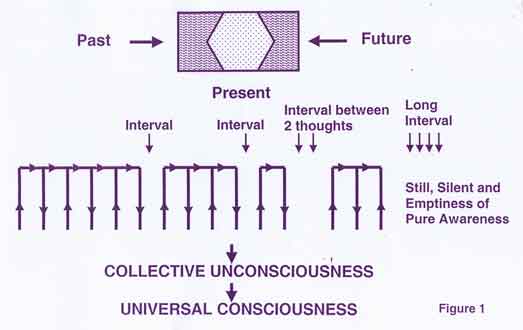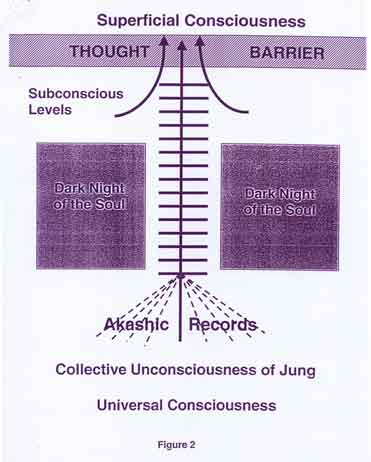
By Dr. Tan Kheng Khoo

Insight meditation (Vipassana) is the practice of moment-to moment awareness
both in formal sitting as well as meditation in action outside of formal
sitting. In sitting meditation we start briefly with breathing as a rising and
falling process, after which the main subjects to be dealt with will be the mind
and the states of mind. The latter include all the emotional feelings and the
states of mind that we are experiencing during the sitting meditation. Whilst
dealing with these 2 phenomena, we are not allowed any choice in the matter. We
just merely watch the thoughts and states of mind as they arise while we sit.
There should not be any attempt at modifying or suppressing the thoughts or
states. This choiceless awareness is of paramount importance in the practice.
The main object of this practice is to see the ceaseless stream of thoughts and
the change of moods and emotions as they arise and fall at that moment. There
should be no attempt at interrupting or interfering with this continuous flow.
We merely watch the process of change and movement. That is to bring to mind the
reality of impermanence of any state, which is invariably changing all the time.
And therefore if we were to cling on to anything or state hoping that it will
remain the same then we suffer. As we continue to practice Vipassana, we will
also realize that there is no abiding essence or self in the three bodies:
physical, emotional and mental. This is the Anatta doctrine (Selflessness) of
Theverada Buddhism. This practice has to continue when we are out of sitting
meditation, when we are doing our daily chores. We can meditate in any position
and in every state of activity, but now we have to make a choice between the
options that are offered us. Otherwise, we get nowhere. We have to choose to
achieve our purpose of action. The accent here is again to be completely mindful
and aware of every action. And lastly, we have to be aware of the reactions that
arise when our 6 senses meet external objects. These latter two practices will
be the theme for the next essay.
First and foremost, we must separate a ‘watcher’ in our consciousness to observe what is going on in our mind and body. The mind includes states of minds, emotions, feelings and higher spiritual realms. This ‘watcher’ starts off as being part of our consciousness, but as we become more and more silent and still, this ‘watcher’ expands itself to be an omniscient, omnipresent and omnipotent but impartial observer. When the practice is intense enough and prolonged enough then we will realize that this ‘watcher’ is really our True Self. In other words, it is the soul or Atman occupying that great expanse of emptiness. And if we can carry this realization with us wherever we go we are self-realized! This is the goal of every mystic. So in order to achieve this aim we must always remember to separate a ‘watcher’. This ‘watcher’ is merely to watch and observe the train of thoughts and emotional feelings as they arise at that moment and not later or before that moment. Later, when we are not in sitting meditation, it should continue to observe and watch our movements so that finally we can control and master our body and mind. But initially, we merely watch and take no action.
States of Mind, Emotions and Feelings
When these states arise, we must know them as they occur. We must not anticipate them or trace them back to their origin, as suggested by some teachers. We must see them and know them at that time of appearance. Do not modify or suppress them. Merely observe them. Look at them head on without flinching. By just watching them, we are practising separation and trying to realize our true self. Some of the states and emotions may be classified as below:
(a) States of mind as depicted in the encephalogram: Beta, Alpha, Theta and Delta Waves. These states have been meticulously described in the article on "Progressive Stages of One-Pointed Concentration Meditation (Samatha)". We simply recognise which state we are in without doing anything about it.
(b) Emotional States: Notice how calm or tranquil you are at the beginning of meditation. Or are you irritated or agitated? Is there anger or hatred? What about restlessness and worry? Is there joy or happiness? Is there a feeling of gleeful anticipation towards the meditation? What about drowsiness or sleepiness? All these emotions must be meticulously noted without agitation. There should also be no attempt at changing these emotions. You are merely the observer; otherwise you do not know yourself. All these emotional states are not you. They may remain there for sometime as emotional background or they may slowly wane.
(c) Altered States: These are states like altruistic love, compassion, and forgiveness and at peace with the whole world. These states are normally not characteristic of that person. Thus lies the danger. If these states take over temporarily our normal emotions, and if we were to act contrarily to our normal character, then we would be in deep trouble! For instance, one may suddenly decide to give away all one’s assets to charity, and then find that there is no more to feed oneself and family. What a calamity! Other altered states may include visits to the lower and middle astral, and these may frighten the meditator, although these escapades are most rare. The feeling of divine love may be so overwhelming that the meditator becomes extremely grateful to God or Allah or Buddha that he can then take up that particular religion straight away without reservation. These altered states, of course, do not last. And when they wane, one drops back to normality again. This coming home to the normal world is something of a let down and can be very disappointing to say the least.
(d) "Enlightened" State of At-One with the Universe: In this state you feel as if you are everything you see and feel, and everything outside you is part of you. If you were to focus on somebody, that person is you. The trees, birds and animals are all you. Nothing is exempt. However, this state does not last. It may last for hours or days at the most, but it eventually it will disappear.
(e) Psychedelic states as in drug-induced states. There may be multi-coloured, multi-faceted and multi-dimensional states, never experienced before in one’s life. You could be floating in this dizzy exotic environment with not a care in the world. You feel that you have reached paradise, and you congratulate yourself for arriving in heaven with no effort. But alas, it is uncontrollable, and finally it ends with a big bang, a let down and a very bad hangover as in a trip with drugs.
(f) Makyo: hallucinations and visions. These visions and hallucinations tend to appear when one is in theta wave. The visions may be figures of Virgin Mary, Buddha, Kwan Yin or Jesus, all of which no living person has ever seen. They are not real. One can eradicate them by simply opening one’s eyes or just change the thought. The famous Zen saying: "When you see Buddha, kill him" is absolutely correct. These hallucinatory states may include the meditator flying in the air or diving into solid earth or wheezing to the moon or stars. There may be scenes of olden times or periods, giving a false believe that these are our actual previous lives from our Akashic records. They are not. They are merely hallucinations. Further, one may smell, hear or feel things that are not perceived by others. Lastly, one may experience an NDE (near-death experience) but this is extremely rare.
All the above states and emotional feelings do not come in one continuous period of time. They appear intermittently throughout the session of sitting meditation, or more commonly they do not appear at all. Therefore, throughout the insight meditation we will see and perceive different states as we go deeper and deeper into Vipassana. For instance, we start the meditation feeling angry and irritated, but as the meditation progresses, we become calmer and then end up being tranquil. We know when we are in Alpha or Theta wave. Then after many months of practice, we reached states of divine love, compassion and at peace with the world. As these states turn up we know. Then deeper still, psychedelic states or hallucinations and visions may also appear. Then we merely recognise them as such and then we let them go. Every state, feeling and vision must just be seen and then dropped. There should not be any attempt at holding on to them. They are all transient and impermanent. One may not be able to repeat the same state or vision ever again. One also should not boast about their occurrences. These transitory states of mind are not for real and therefore it is quite useless clinging to these memories. They are like will-o’-the- wisp’ of the air. All these states come without premonition or warning, and they disappear in like fashion. They appear intermittently throughout that process of observing our thoughts. There is no order in their appearances.
The Mind
Assume the same sitting position as in the concentration practice. After going round your body (sensing different parts of the body) as taught in Samatha meditation, you again come to the breath. This time you notice the breathing as an arising and falling phenomenon. Then note the state of the mind. Further, fix your attention at your forehead between the two eyes. This is now your television screen and all the thoughts are now to be placed here. Past, present and future thoughts are to be screened here (Fig.1).

They appear as pictures
here, but the mental chatter will occur at the ears. Now again separate a ‘watcher’
who will observe the pictures and listen to the verbal commentary. One cannot
concentrate on 2 things at one time. So you have to decide to pay attention
either to the pictures or to the mental chatter. The attention must be total and
not half-hearted. If you can look at the one picture in full bloom, it will
disappear, and momentarily, there will be no thoughts. Soon another train of
thoughts will arrive. This time it is even more powerful and you could be caught
in its momentum for a length of time. This chain of associated thoughts will
continue until suddenly you come to realize that you are in that chain, and
there is again another interval of stillness and silence. These intervals of
emptiness are initially not recognized, until many weeks of months of meditation
have passed. Then when one is able to slow down the thoughts and reduce their
number, then these intervals are even easier to detect. It is during Theta wave
that one can more easily catch these periods of silence. If an interval of
stillness appears, hold on to it. Don’t let it go. Try and lengthened it.
Enjoy it. But alas, without experience it will slip away very quickly.
Therefore, experience is essential in this practice. You can read as many books
as you like; it is of no help whatsoever. It is practical experience that
counts. Continuing with this Vipassana practice, there will come a time when you
can keep that interval of still and silent emptiness long enough to enjoy the
pure awareness. From this expanse of pure awareness, insights will arise. These
are from ‘the small little voice’ arising out of the pure awareness. These
insights are appropriate to your level of development, no more, no less. Perhaps
after many years of practice and truly letting go, spiritual wisdom may then
accrue.
The Objects of Mind
What are the thoughts that arrive at your television screen? Do not bring out
subjects for contemplation. Just let the thoughts arise on their own.
Inevitably, problems of the present will come about. They may be financial
problems or situations of the immediate family. There may be some tension with
regards to the office personnel. Relationships with sexual overtones feature
quite prominently to certain individuals. Then memories of yesterday, last week
or last month will turn up. After some time these memories will change to
planning for the future. Whether they are of the past, present or future, these
pictures must be seen at the center of the forehead, where the screen is. Later
on, when all the problems are seen to, random associative thoughts will begin a
chain of their own. These chains may gather such a momentum that one is unaware
of them and one is caught in them. Then all of a sudden, one is brought back to
the present practice, and then a short interval of stillness is brought to one’s
consciousness. In this stillness one may note one’s state of mind: are we
calm? Still agitated? Is there rapture? And so on. Some external noise will
distract one momentarily. Then the thoughts will start to appear again, after
another external noise triggers another memory. The above process will repeat
itself again and again, but with diligence and practice the thoughts are seen
more clearly and can be held for longer periods of time. With experience and
prolonged practice, we can have longer and longer periods of stillness and
silence. These intervals of no thoughts may be extended to a definite and
perceptible length of time. This state of pure awareness is most exhilarating:
it is unadulterated bliss! So the discipline here is to repeatedly go into this
state of pure awareness which should be extended as long as possible. It is
during this still and silent emptiness that insights will appear. What are the
insights? It all depends on one’s spiritual development. If one is still
worldly and materialistic, then the insights will be of that nature. If one has
let go a fair bit then they will be of a higher plane. Sometimes precognition or
clairvoyance or telepathy may turn up, but this is not a constant feature. They
are more like fluke occurrences. The latter may be transmitted as voices or just
plain knowing. These ‘psi’ phenomena are not repeatable.
At the end of the day it is the character transformation that counts. Love,
compassion and equanimity should replace our negativities like craving, anger,
selfishness, pride and ignorance.
The Three Hearts
Firstly, there is the physical heart, which is just to the left of the sternum.
Secondly, there is the emotional heart, which is just below the bottom of the
sternum. Whenever one gets a shock or news of disaster it catches one at the
hollow pit of the stomach, our second heart. Thirdly, there is this Divine
heart. It is also called the soul or Atman. According to Ramana Maharshi, it is
the size of the last phalange of the thumb and is situated just to the right of
the bottom of the sternum. Now following from the above Vipassana meditation,
when we have arrived at S.E.S. (Stillness, Emptiness, and Silence) for quite a
long time, we can bring down our attention down to where the seat of the soul
is: just to the right of the bottom of the sternum. And stay there as long as we
can. This will reinforce our love and compassion for the service of mankind.
The Levels of Consciousness
In insight meditation, the watcher merely observes the thoughts and pictures
arising in the superficial consciousness. Then with prolonged practice, the
still and silent emptiness is achieved. With further practice, memories of the
subconscious may surface (Fig. 2).

The subconscious is defined in this paper as
past events in this present life. Many levels of the subconscious may now
occasionally erupt triggering the memory bank. The surfacing of any memory is on
‘the need to know basis’ and not on ‘I want to know basis’. These
memories are there to unravel the knots in our psyche at that moment. Then as we
continue to let go more and more and if our practice is on the right track, then
we could be extremely privileged to peep into few of our Akashic Records. The
trouble here is that we cannot be certain that it is truly the Akashic and not
merely our hallucination. The Akashic is in the realms of the Collective
Unconsciousness (of Jung). Of course, in this realm innumerable lifetimes may
surface, and therefore many karmic causes may be elicited to explain the
difficulties we are in at the present. Delving into past lifetimes in the
Collective Unconsciousness may engross us for long periods of time, but at the
end we have to let go even of this feat. It is said that Gautama Buddha was able
to see every lifetime since his first human incarnation.
Finally, we have to drop down even further to the Universal Consciousness that
means into the realm of the Godhead. This supreme feat has only been achieved by
a few prophets in the past while they are alive, and Buddha was one of them. It
is in this rarefied realm that we realize that every consciousness (vegetation,
animal, mineral and human) is interconnected. Nothing is outside this supreme
Godhead. It is one without a second. This is the non-dualistic realm of the
Unborn, Uncreated and Uncompounded. This is the state of Nirvana!
The Dark Night of the Soul
Not all mystics go through this stage. After many years or lifetimes of
purification and practice of meditation, the mystic arrives at this stage of
purgation. It is the penultimate stage just before union with the absolute. It
is the last struggle before one arrives at Unity or Ultimate State of
Consciousness. In the Buddhist Theverada tradition, the last 3 fetters to be
relinquished are (1) Ego-conceit, (2) Restlessness of the mind and (3)
Ignorance. When these 3 are dropped, he becomes a saint. The eastern traditions
do not stress much on the Dark Night. This experience is mainly described by
Western mystics. The purgation is composed of utter despair and deprivation. The
worst form of mental disease is a breeze compared to this sadness, deprivation
and depression of the Dark Night. The mystic path hitherto has been strewn with
illuminating experiences, especially if the mystic believes that God has been
seen supporting him all along. He has been on this path of illumination up to
now. And now he is crossing over to another path, which is ‘Unity with the
Absolute’. This is now the final test of total detachment. He has to erase
completely the residual ego-conceit and ignorance, and his motto should be ‘I
am nothing, I have nothing, I desire nothing’. This is very similar to the
last Buddhist fetters of Ego-conceit, Ignorance and Restlessness. The Christian
mystic feels as if God who has been nourishing him all this while has suddenly
abandoned him. The pain and emptiness is excruciating. The other name for the
Dark Night is the Mystic Death. This period of purgation may last a few months
or a few years. At the beginning, the pendulum swings from ecstasy to
deprivation. As the practice continues, the periods of sadness and depression
lengthen until near the end, when there is only the Dark Night and no delight at
all. Of course, during these periods of ‘hell’, nobody could be blamed if he
were to give up the mystic path altogether. However, if he were to persevere, as
most do, the rewards are most exhilarating and exquisite as it is a prize of the
spiritual realm and nothing mundane is comparable to it. He is now enlightened
and he is united with the Absolute. Although physically he is in this world, he
is now not of the world. Everything he touches turns to gold. He has been trying
to achieve this state for many lifetimes. And finally he is in this
non-dualistic state of Nirvana! The whole world should celebrate for this one
individual who has joined the Godhead. He now knows that he has always been
there and has never been separate from it!
![]()

